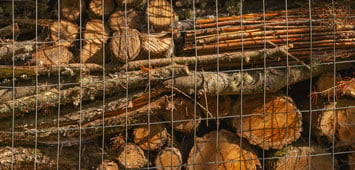
Compost Happens

Contributor

I’ve been digging in the dirt my whole life, and even managed a fairly large estate garden for a while, but an element of surprise still catches me off guard almost every year.
January 19, 2012, was a day for the record books. My garden at Old Goat Farm, about 45 miles southeast of Seattle at the foot of Mount Rainier, received about a foot of snow. Overnight, the snow changed to freezing rain, a rare weather event for the Puget Sound region. By mid-morning, trees throughout the area began to break apart under the weight of snow and ice. From within the house, the snapping branches sounded like gunfire. It quickly became too dangerous to go outside.
[pullquote]You never know what’s going to go down from one year to the next in the garden.[/pullquote]

As I watched from the window, a 40-foot walnut (Juglans sp.) slowly tipped over as a 60-foot oak (Quercus sp.) next to it began to shatter. A beautiful, 50-year-old, 25-foot-tall Japanese maple (Acer palmatum) broke off at about 5 feet above ground. At the end of the same border, our 20-foot plum tree (Prunus sp.) splintered at soil level.

Eleven Douglas firs (Pseudotsuga menziesii) in the garden lost half their limbs, crushing neighboring shrubs and small trees beneath their falling branches. On the other side of the house, an enormous 80-foot black locust (Robinia pseudoacacia) fell, taking our power lines out in the process. To say I didn’t see this coming would be a huge understatement.
The following day I stared out the window at piles of debris and wondered where to begin cleaning up. Fortunately, I heat my house with wood but the sheer volume of downed branches was way more than I could use.
[sidebar] Construction details
Five trees along the property line, spaced five to twenty feet apart, serve as upright supports. Eight-foot-tall four-by-fours set in concrete footings provided additional support between the trees. Panels of heavy-gauge metal horse fencing attached to the uprights form eight-foot-tall walls to contain the compost layers. [/sidebar]
Discussing the situation with a friend, she reminded me of a compost wall on a nearby island. Roughly speaking, a compost wall is made up of layers of woody compost fenced within a vertical structure to form a semi-solid barrier. A small seasonal specialty nursery we operate on our property had a problem area that needed screening, so this seemed like a perfect solution to two problems. After considering the possibility, I talked myself into tackling the project.
Since this was to be a prominent—and permanent—feature in the nursery yard, I wanted it to be more ornamental than just a compost bin. Working with my selection of hard woods: walnut, oak, and black locust, I cut branches into short lengths that could be placed within the fence either in horizontal layers, showing off nice lichens and mosses on the exposed bark, or stacked to present the logs in cross section. The end result offers a variety of colors and texture; vertical bunches placed among the tiers interrupt the pattern, creating additional interest.

The finished wall is a striking eight feet high and sixty feet long, and varies in width from two to three feet. It is a dramatic backdrop for the central part of the nursery and really makes the plants stand out. My compost wall has become a great topic of conversation among neighbors and visitors, many of whom suffered similar tree losses and spent countless hours in line at the dump getting rid of debris from their properties. As a bonus, birds nested in the new structure last spring. The compost wall appears to have taken on a new life of its own.

Share:
Social Media
Garden Futurist Podcast
Most Popular
Videos
Topics
Related Posts

Ground Up Science for Greener Cities with Garden Futurist Dr. Alessandro Ossola
Spring 2023 Listen to the Podcast here. Alessandro Ossola is a scientist who gets very excited about the challenge of climate change allowing for an

Readying Urban Forests for Climate Realities with Garden Futurist Dr. Greg McPherson
Winter 2023 Listen to the Podcast here. “Going from the mow and blow to a more horticulturally knowledgeable approach to maintaining the landscape. And that

Welcome, Greywater, to the Garden
Summer 2022 Oh, summer: delightful warm air, tomatoes swelling on the vine, fragrant blooms on an evening stroll. When it’s warm and rainless, how is

Big Tree-Data and Big-Tree Data with Garden Futurist Matt Ritter
Summer 2022 Listen to the full Garden Futurist: Episode XV podcast here. We are in an environmental crisis right now in many parts of California











Responses